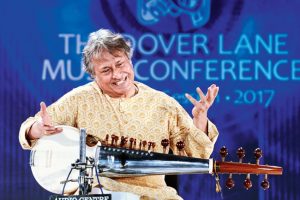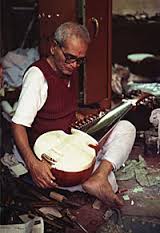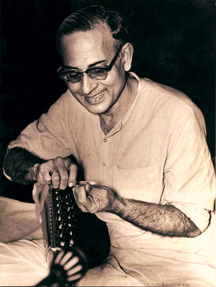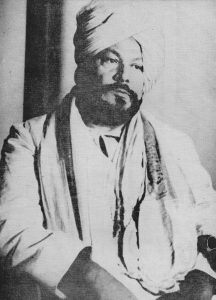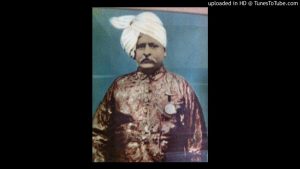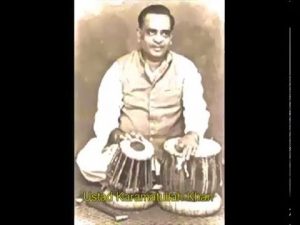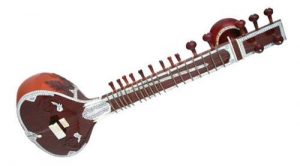| Told by | Prof. Sukanti Dutta |
| Obtained by | Rajeswary Ganguly Banerjee |
| Date | 29th December, 2016 |
| Place | Paikpara |
| About the speaker | Academician, Musician, Music Connoisseur |
| Tags | Greenroom, Shyam Kalyan, Nikhil Banerjee, Strings, 1981, Rabindra Sadan, Ravi Shankar, Anindo Chatterjee, Deepak Chouwdhury, Rabin Paul, Dover Lane, Partho Majumdar, Sitar, Amit Roy, Kaan, Jowari, Hiren Roy, Taan, Sitar, 1980, Vilayat Khan, Tejendra Narayan Majumdar, Zakir Hussain, Amsterdam, Swapan Chowdhury, London, Shyam Kalyan, Pancham Sawari, Kaushik Bhairo, Bhairav, Uttarpara Sangeet Sanmelan, 1980’s,1977, 1978 |
| Language | Bengali, English |
Prof. Sukanti Dutta speaks :
Verbatim:
??? ???? ?????????? ????????? ??? ??????????? ??????? ???? ??????????????? ?????, ????? ??????????, ?? ??? ????? ?????? ?? ???????? ??????? ??? ???? ?? ????? ???? ?????? ?????? ?? ???????? ???? ????? ???????? ?????? ????, ??? ????????? ??? ????? ????? ???? ???? ????? ??? ?????? ??? ???? ?????? ?????? ??? ????, ??? ???? ??? ??? ???? ????? ?? ???’??? ?? ???? ??? ???? ??? ??? ????????, ???? ???? ?? ???? ???????? ????? ?? ???? ????????? ???, ???? ???????? ?????? ????? ??? ????? ???? ????? ????? ??? ??? ????? ???? ???? ?????
?? ??????? ?? ?????????? ????? ???? ????? ????????? ??????????? ???, ???????? ?????????? ?????? ???? ?????? ??????? ?’?????? ??????? ?? ???? ????? ?? ????? ???? ?? ??? ?????????? ?????? ?? ???? ???, ??????????? ?????????? ??? ???? ????? ???? ???? ????…????? ???? ?????? ?? ????? ??? ????? ??????? ??? ???, ???? ?????? ?? – ‘???????? ??????? ??? ????? ????’? ?? ????? ????? ???? ???? ???????? ??? ?? ? ??????? ???? ???? ????????? ?? ??? ??? ???????
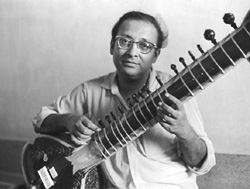
?????? ???? ???????? ?????????? ?????????? ????? ????????????? ?????????? ?????? ???? ????? ??????? ????????? ?? ?? ?? ?????? ??? ??? ???? ???? ????? ??? ????? ??????? ?????? ?????? ??? ??? ???????? ?????????? ????? ???, ???????? ????? (?????), ?? ???????? ??? ???? ???? ???? ???? ??? ????? ???? ??? ??? ????, I will do it on my own? ?? ??? ??????? ??? ???? ???,???? ???, ????? ???-?? ????, ??????, ?? ????? ???? ??????? ??????? ???, ?????? ??? ???? ????? ????? ????? ?? ??? ???? ?? ???’?? ?????? ??????? ??? ??? ??????? ???? ???? ?????? ???? ??????? ???’?? ??? ??? ????? ?????? ????? ?????? ??, ?????? ????? ?????? ?????? ??, ????? ???? ??? ???, ??? ???? ??????? ?????? ?????? ??? ??? (???? ???????) ??????? ??? ?????-‘???? ???????? ???? ???? ??? ??’, ???? ?????? ???? ?? ????? ??? ??? ??? ?? ?????? ???? ??? ??????? ?? ????? ???? ???? ?? ???? ?? ???? ??????, ???????? ???? ?????? ?????? ?????? ?????? ?? ?? ??? ??? ??? ??????? ??? ?????? ?? ??, ???? ???? ????? ????? ?????? ??? ??? ?? ??? ???? ???? ?? ?? ?????? ???????? ????? ??? ??? ???? ???? ???? ????, ?? ????, ??? ????, ???? ???? ??? ???? ??? ???? ?? ???, ????? ????? ???? ??? ????? ??????? ???? ????? ??? ???, ??????? ????? ??? ??? ???? ???? ?????? ???? ?? ??? ???? ??’? ?? ???? ???? ???? ???? ??? ???, thanks to ill health ???? ??? ???? ????? ?????????? ??? ?? ??????? ??????? ?? ?????? ??- ????? ??????? ??? ??????? ???? (???? ???????)? ??????? ??? ??????? ????? ???? ?????? ???? ????? ??? ?????? ? ???? ???? ??? ???? ???????? – ‘??? ?? ?? ??? ???? ???? ????? ?????, ?????? ???? ???? ??? ?? ???? ?? ???? ????’?
??? ???? ???? ????????? ?? ??? ???? ?? ??????? ??? ????? ?? ??? ??? ?????? ??? ?????? ?? ???? ?? ??????? ?? ?? ??? ?????, ?? ????????? ?????, ????? ??? ??????? ????? ???? without any accompanist? ???? ????? ???? ?? ????????? ???? ???? ?????, ??? ??????? ???? ?????? ????????? ??????? ???? ?????? ?? ???? ???? ??????? ?????, ????? ??????? ????? ??????????????? ???? ???, ????? ??????? ????? ?????? ???? ?????, ???????? ??????????? ????? ???? ?????? ????? ??????? ???????, ?????? ?????? ????? ??? ???? ???? ??????? ??, ??? ???? ??????? ????? ??? ?? ??? ?????? ????? ?????? ???? ???????? ??? ??? ???? ??????? ?????? ????? ?????? ????????? ???? ??????, ??????? ????? ??????? ??? ????, ?? ??? ?????
?? ??? ????? ???? ?? ?????? ??? ??? ??????????? ??? ?????? ??? ???????? ?????????? ????? ??????? ???????? ????? ??? ???? ?????? ?????????? ???????? ????? ????????? ???? ?? ????? ?? ????? ???? ???? ??? ?? ???? ???? ??????????, ??? ???? ?????? ??? ??? ?? ???? ????? ??????? ?? ??? ????? ?????? ??? ????? ?????? ????? ??????? ?????? ??? ????? ??? ????? ???? ??? ?????? ????? ?????? ????? ???????? ???? ?? ????? ????? ???????? ??????????? ????? ?? ?? ???? ????? ??? ??? ??????? ???? ????? ?????? ??????? ???? ???????? ???? ???????? ?? ?? ??? ?? ??? ???? ??? ???? ???? ???? ??????? ?? ?? ???? ??? ??????????? ???? ???? ???? ??? ??? ????? ????????????? ????? ???? ??? ??? ????
??? ????? ???? ????? ??? ??? ????? ????? ????????? ?????? ???????? ??????? ????? ?? ??? ??? ??????? ???????, ??? ???????, ???????? ????? (??) ??????? ??? (??)? ??? ??? ???? ??? ??? ??? ?????, ????? ?????? ?????????, ??? ??? ??? ????? ???????? ???? ?????? ????, ???? ????????? ???? ???? ????? ??? ???? ?????? ??? ?????? ????? ????? ??? ???? ???????? ??? ???? ???????? ?????? ?? ????? ?? ???? ???? ???????? ?????, ????? ????? ????? ???? ???
Verbatim by: Dr. Suranjita Paul
Translation:
Pt. Nikhil Banerjee was scheduled to play Shyam Kalyan at a programme, the announcements had been made, but he was yet to fix the strings. The string was to go along the bridge could not be fixed. This was because his eyesight had deteriorated so much and he had just recovered from his stroke. I can vaguely remember the date to be possibly 1981. We were sauntering around, but were not allowed inside. Rabindra Sadan has two greenrooms; one of them is visible from the Car Park but only if the windows are open.
On a previous occasion, Ravi Shankarji had almost taken a class before a programme, flanked by Anindo Chatterjee on one side and Dipak Chowdhury on the other. We were privy to everything from what he would play to how he would come on to the stage, thanks to Rabin pal, Ravi Shankarji’s organizer. He had kept a window open just a little bit and had told Partha Majumdar, a friend of ours, ‘Stand here and you’ll get to hear everything.’ Partha had taken me there. We two had stood there and seen a lot of how he demonstrated the Taalas.
On this occasion, we had used a similar opening to stand outside pt. Nikhil Banerjee’s greenroom. Ravishankarji was more conscious about these things, Pt. Nikhil Banerjee more oblivious. So through the open window I could see him having difficulties in fixing the string. Anindo Chatterjee asked him, “Kakababu (he used to call him that), can I have a look at that?” He said, “ No, not at all. I will do it my own.” Hiren Roy’s son, Amit Roy, or Bachchu as he was called, tried to lend a helping hand, but was allowed very little. He fixed the string till making the last kink at the end, allowing him only to fix the last gauge of the string with the left hand tuning pegs. Then he told Amit, referring to Hiren Roy, “Your father has not done the Jawari well this time.” which had been done the previous day.
Nikhilbabu preferred a jawari that was neither too open nor too closed, something in between. This produced an outstanding sound, and when he performed Taans, there was a singular sound and you could hear just what was being played. I’ll take no names, but there are many taanbaaz Sitarists, who perform Taans at a blazing speed, at 8-times, sixteen-times or twenty-times even, but then the other strings start to respond and there is too much noise. This I had never heard from Pt. Nikhil Banerjee.
After the 80s, he became a bit slow, owing to ill health, but came to terms with that. He had mentioned this to some persons somewhere, while praising Ustad Vilayat Khan Sahab, of whom he was a great admirer. While listening to a Taan by Ustad Vilayat Khan Sahab, he lamented, “ Ah, I could have done such taans at a time, but my health has stopped me. I cannot perform them anymore. He had acquiesced not to perform taans beyond a certain Laya himself.
But the greatest thing about him was the sense inherent in his head. He used to travel alone, without any accompanist. I have heard it from people who used to plan his programmes abroad, from many other people including Tejen, that he was scheduled to play, say, at two programmes in Amsterdam with Zakir Hussain, one at London with Swapan Chaudhuri five at sundry locations with Anindo Chatterjee. But they were not travelling together, he travelled alone, and this with a high optical power, resulting from myopia and the surgery on the eye which was affected by the second or third stroke. I do not know how he did it, but he did so religiously.
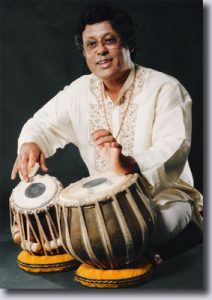
Maybe it was Anindo Chatterjee who reminisced about the time when they were to play in a programme at Paris. They were very particular about the time, about the exact duration of the programme. Ten minutes before the programme, the strings had not been fixed, they kept breaking off repeatedly. But Pt. Nikhil Banerjee was adamant about doing it himself. And after that, he was to play Shyam Kalyan on PanchamSawaritaala, which ran to an hour and a half. But he never compromised about the time, that is to say, if he played Alaap for one hour here, he would do so for an hour abroad also. He was not concerned about what the audience was willing to accept or not, he would endeavour to elevate the audience to his level. This is one instance I remember among many.
Let me tell you about another experience. Nikhil babu played Kaushik Bahiron at the Uttarpara Sangeet Sammelan in the late seventies, 1977 or 1978. Me and two or three of my friends were sitting in the empty pandal, all the people had left, well after seven in the morning. The reason being, even after the playing had stopped, and the audience had left, the effect of the music lingered on. I can quote many such experiences from my memory if you wish.
Translated by: Arundhati Banerjee
Picture Courtesy: Google
http://www.stevenbaigel.com/banerjeedoc/introduction.htm
http://www.melbournetablaschool.com/anindochatterjee.html
Edited & Designed: Dr. Suranjita Paul
Data processed at SAP-DRS Lab, Department of Instrumental Music, Rabindra Bharati University.

